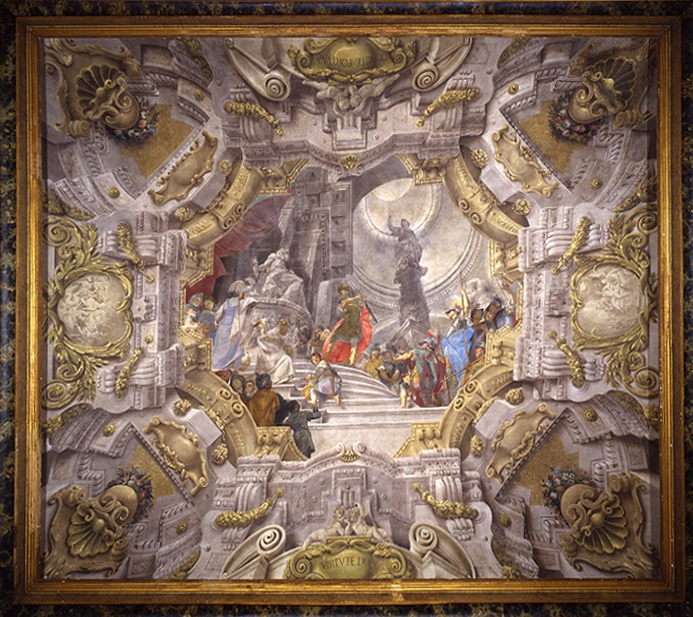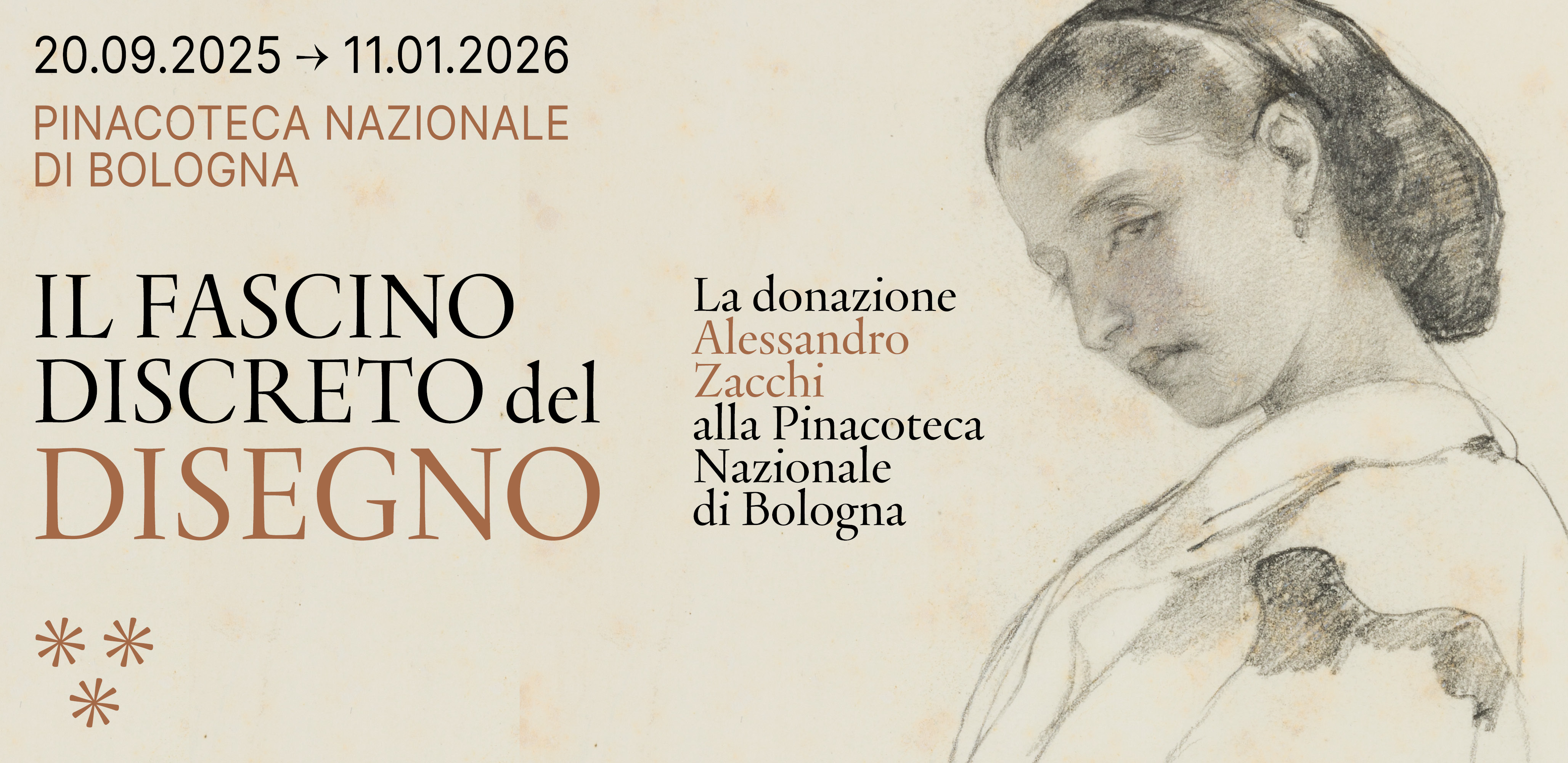
After the death of Ercole Pepoli, in 1707, it's Alessandro which takes care of the decoration works of the Palace, and it's him that in 1710 gives to Donato Creti the task of realize the fresco depicting Alexander the Great cutting the Gordian knot. Here the tradition of the "quadratura" is proposed with all its strenght, so that the scene frescoed by Creti is inserted in an exaggerate architecture by Marc’Antonio Chiarini that become the real protagonist of the painting.
Just like Ercole before him, even Alessandro Pepoli choose as subject a namesake, Alexander the Great. The depicted episode, taken from the ancient history, shows the Macedonian warrior entering in the city of Gordio, where it was preserved an ancient chariot of King Midas ancestors, tied with a knot that nobody was able to untie. According to an ancient prophecy, tha man able to untie that knot it would be the conqueror of the entire Asia, than Alexander, without losing time, break it with a silngle sword blow. The general is depicted at the center of the vault, stressed by his red cloak, in front of the chariot with a Jupiter statue on it, in the moment in which is to lash out with the sword. In the two golden ovals at the base of the vault are represented two episodes of Alexander's life: Alexander with his teacher Aristotles and Alexander overcoming Darius at the Isso battle.
Opposite to the vivid Crespi naturalism, here we face a rela "Rappel à l'ordre", with the rebirth of the illusionistic framing and the classical style of Creti, with his precise and refined design, totallt different from the liveliness and freshness of Crespi frescoes.









